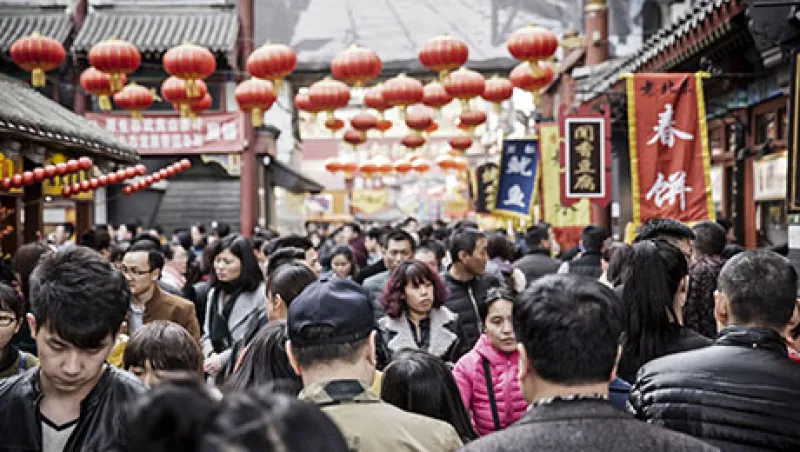China’s economic slowdown will dampen growth across developing Asia, but the region will remain a source of dynamism for the global economy, the Asian Development Bank predicts.
“China’s growth moderation and uneven global recovery are weighing down overall growth in Asia,” the bank’s chief economist, Shang-Jin Wei, said in unveiling the forecast at a news conference in Hong Kong on Wednesday. “Despite these pressures, the region will continue to contribute over 60 percent of total global growth.” He urged countries to press ahead with productivity-enhancing reforms and invest in infrastructure to raise their potential growth rates and “insulate themselves from global instability.”
China will likely reach only the bottom end of the government’s recently adopted target growth range of 6.5 to 7 percent this year, Wei says, and slow further to 6.3 percent in 2017, down from 6.9 percent in 2015. The decelerating trend reflects a slowdown in export growth and labor supply and expected government efforts to cut excess industrial capacity. Still, Wei said, a hard landing in China was “unlikely” and the world’s second-largest economy should contribute nearly 30 percent of global growth in 2016, essentially unchanged from the past few years.
China’s moderation will reduce growth across developing Asia, which excludes Japan, to 5.7 percent this year and next, from 5.9 percent in 2015. That said, the region’s outlook is still one that most of the rest of the world would envy.
India will continue to be the world’s fastest-growing major economy, expanding by 7.4 percent this year and 7.8 percent in 2017, compared with 7.6 percent in 2015, according to the ADB. “India’s growth can be higher if the government implemented reforms, including reforms in the labor markets,” Wei said.
Southeast Asia is another bright spot, with growth projected to pick up to 4.5 percent this year and 4.8 percent in 2017, from 4.4 percent in 2015. The bank predicts that the region will see productivity gains as manufacturers relocate factories from China to lower-cost neighbors, including Bangladesh, India, Sri Lanka, Cambodia and Vietnam. “Some nations will actually benefit from China’s slowdown,” said Wei.
Although Wei played down the risk of a Chinese hard landing, he did explore a “worst-case” scenario in which the nation’s growth rate could slip to just 1.9 percent at some point in the future. “The sharper fall is unlikely,” he said, “but it if happens, it could generate a bigger impact.” Such a slide would reduce global growth by 1.75 percentage points, growth in Japan by 1.5 points and growth in the rest of Asia by 1.8 points.
China’s slowdown is one of three key risks for Asia, Wei says, along with a rise in U.S. interest rates and producer price deflation.
Wei expressed confidence that China could pull off its economic transition without a dramatic slowdown, saying he expects growth in private consumption to mitigate slowdowns in manufacturing and exports. “China’s structural change is transforming the economy slowly,” he said. “We see Chinese households continue to express willingness to spend both domestically as well as globally.”
Private and public consumption now makes up more than 50 percent of China’s gross domestic product, up from less than 40 percent a decade ago. “We see Chinese households spending more, not only in China,” he says. “We see them spending as tourists and investors globally.”
The government must continue to implement a wide range of structural reforms to sustain that growth momentum and keep the transition on track, Wei said. Among the most important reforms, he added, was liberalization of the household registration system, or hukou, which currently makes it difficult for rural residents to relocate permanently to urban areas. Until the early 1990s, the government did not allow people to relocate at all, and even today rural residents who move to cities to work don’t enjoy the same social benefits as long-term urban residents. The government has begun reforming the social security system in a few select cities to give migrant workers the same benefits as their urban counterparts.
The government should expand such reforms nationally if it wants to stimulate consumption among large portions of the rural and migrant population, which makes up more than half the nation’s 1.4 billion people. “Supply-side reforms, including improving labor market flexibility, are needed to improve the economy’s resilience to negative shocks and raise its potential growth,” Wei said.






